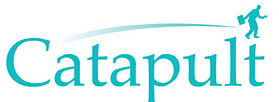Article 4 of 7-part thought leadership series: Protecting and Sustaining Your Organisation Through Ethical Decision-Making
As we advance in our 7-part series, the fourth article pivots towards a proactive stance on ethics. We explore how implementing Robert S. Hartman’s 3 Dimensions of Value—Systemic, Extrinsic, and Intrinsic—can serve as a bulwark against potential organisational scandals.
Strategic Application of Hartman’s Values
Identifying and mitigating risks before they escalate into crises is essential. Hartman’s dimensions offer a strategic framework for this:
- Intrinsic Value: Cultivating a culture where every employee feels valued and heard can reduce the likelihood of unethical behaviour going unnoticed or unreported
- Extrinsic Value: By setting realistic performance targets and aligning them with ethical conduct, companies can prevent the undue pressure that often leads to compromised decision-making.
- Systemic Value: Organisations can establish robust governance structures and compliance systems. For example, creating an automated alert system for unusual financial transactions can pre-empt fiscal improprieties.
Case Study: A Financial Firm’s Turnaround
Consider a financial firm reeling from an insider trading scandal. Implementing systemic value, it establishes tighter control protocols and transparent reporting systems. For extrinsic value, it revises its incentive structures to reward long-term, sustainable performance rather than short-term gains. In the realm of intrinsic value, it launches an ethics training program that emphasises the importance of individual responsibility and collective integrity.
Hypothetical Scenario: Manufacturing Company’s Ethical Overhaul
Imagine a manufacturing company that has suffered from repeated safety violations. By reinforcing systemic value, it updates its safety protocols and ensures regular, independent audits. Externally, it invests in safe technology and rewards departments that meet safety standards without cutting corners. Intrinsically, it fosters a ‘safety-first’ culture where employees are empowered to speak up without fear of reprisal.
Mitigating Risks Through Balanced Values
The integration of Hartman’s values helps organisations anticipate and address areas vulnerable to ethical breaches. For instance, a company expanding into a new market (extrinsic value) can do so while ensuring compliance with local laws and international ethical standards (systemic value), and by engaging with local communities to understand their needs and concerns (intrinsic value).
Conclusion
The adoption of Hartman’s dimensions creates a comprehensive ethical framework that can help organisations navigate the complexities of modern business. By proactively applying these values, companies can build resilience against ethical missteps and foster a culture of integrity that is both preventive and performance-enhancing.
Join us for our next discussion, where we will delve into the pathways that can steer organisational culture towards ethical sustainability and excellence.
Stay with us as we continue to chart the course for ethical vigilance and proactive integrity in organisational life.
🚀 Embark on a journey towards ethical excellence and business success. Your organization’s future depends on it.
👉 Begin your journey to ethical excellence: Take the quiz now at [https://goodculture.scoreapp.com]
#EthicalLeadership #BusinessIntegrity #OrganisationalHealth #GoodCulture #ethics



0 Comments